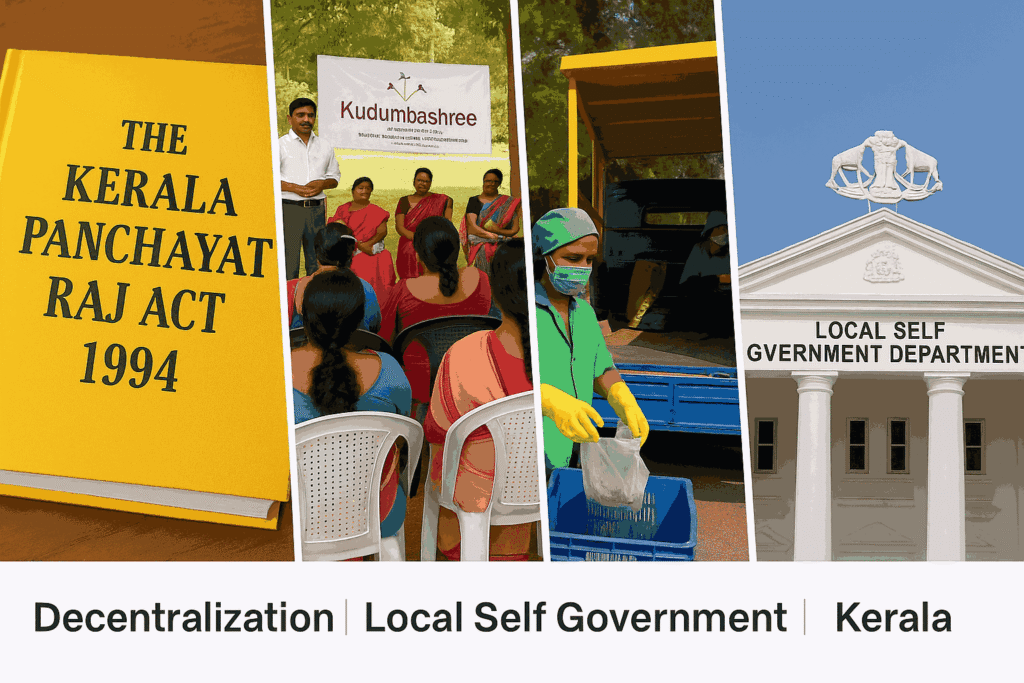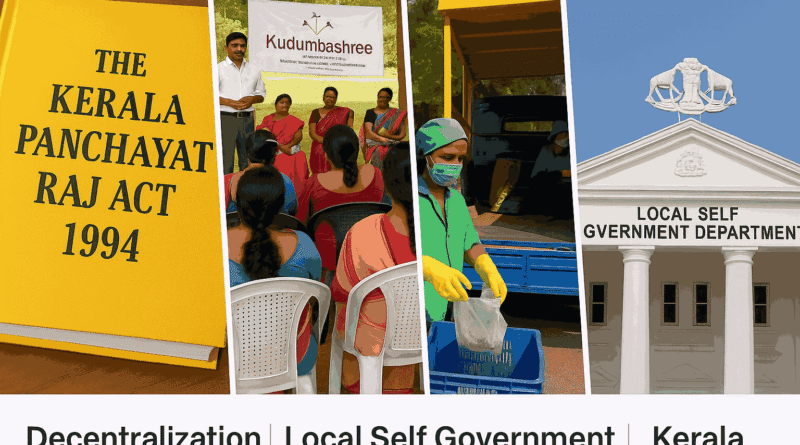Ten Years of Kerala’s Panchayati Raj: Empowering People, Sustaining Change
Ten Years of Kerala’s Panchayati Raj: Empowering People, Sustaining Change
By Public Headlines Bureau | November 2025

Introduction: A Model of People’s Governance
Kerala’s journey in implementing the Panchayati Raj system remains one of India’s most inspiring stories in democratic decentralisation. Rooted in the 73rd Constitutional Amendment (1992), Kerala took the mandate beyond paper — building a real model of “People’s Planning” that empowered local bodies, improved service delivery, and involved citizens directly in governance.
Over the last ten years (2015–2025), Kerala’s Panchayati Raj Institutions (PRIs) — including Gram Panchayats, Block Panchayats, and District Panchayats — have been central to implementing developmental policies, social welfare schemes, and environmental programs.
Decentralisation in Action: The Kerala Model
Kerala stands apart for its deep-rooted decentralised planning. The State Planning Board’s People’s Campaign for Decentralised Planning, started in 1996, set the foundation. In the past decade, this model has matured with advanced digital tools, transparent funding mechanisms, and active local participation.
Each tier of local governance — Gram Panchayat, Municipality, Corporation, Block, and District Panchayat — has been given planning and financial autonomy to design and execute development programs suited to local needs.
The Local Self Government Department (LSGD) of Kerala has evolved into one of the most efficient administrative arms in India, managing welfare delivery, waste management, housing, women empowerment, and social security schemes.
Key Achievements (2015–2025)
1. Kudumbashree Mission – Women at the Core
Perhaps the most transformative initiative under Kerala’s Panchayati Raj system is Kudumbashree, launched in 1998 but greatly expanded in the last decade.
- Women Empowerment: Kudumbashree’s three-tier network of Neighbourhood Groups (NHGs), Area Development Societies (ADS), and Community Development Societies (CDS) has over 45 lakh women members across Kerala.
- Economic Growth: Thousands of women-led micro-enterprises have emerged in sectors like food processing, handicrafts, textiles, and services.
- Social Leadership: Kudumbashree members actively participate in local governance — many serving as elected Panchayat representatives or resource persons.
- Recent Initiatives: The Micro-Enterprise Development Programme and Startup Village Collective have helped rural women become digital entrepreneurs.
2. Haritha Karma Sena – Leading the Green Revolution
A flagship initiative of the Suchitwa Mission under the LSGD, the Haritha Karma Sena (HKS) represents Kerala’s grassroots-level response to solid waste management.
- Each local body has its own Haritha Karma Sena, a team primarily of women workers who collect, segregate, and manage household waste.
- The scheme not only reduced landfill pressure but also created thousands of green jobs.
- The integration of Material Collection Facilities (MCFs) and Resource Recovery Facilities (RRFs) at the Panchayat level has made Kerala a leader in community-driven waste management.
3. Local Governance Digital Transformation
Over the past decade, Kerala has digitally integrated Panchayats through systems like:
- Sulekha: Decentralised plan formulation and monitoring software.
- Sanchaya: Property tax, license, and rent collection system.
- Sevana: Civil registration of births, deaths, and marriages.
- Soochika: Grievance redressal platform at local body level.
These systems have strengthened transparency, accountability, and citizen participation.
4. Welfare and Social Security Programs
Local bodies have been pivotal in implementing welfare programs like:
- Ayyankali Urban Employment Guarantee Scheme (AUEGS)
- Life Mission (housing for the homeless)
- Asraya (destitute rehabilitation program)
- Mazhavil Housing Scheme
- Mahatma Gandhi National Rural Employment Guarantee Scheme (MGNREGS)
Kerala’s Panchayats often outperform national averages in implementation efficiency and community participation in these schemes.
The Role of the Local Self Government Department (LSGD)
The LSGD acts as the backbone of Kerala’s decentralisation process, coordinating with the State Planning Board, Kudumbashree Mission, Suchitwa Mission, and urban/rural development wings.
Achievements in the last decade include:
- Model Local Self Government Awards to high-performing Panchayats.
- Full digitalisation of local body accounts and project monitoring.
- Community participation in climate-resilient planning, flood management, and sustainable tourism projects.
The LSGD’s 2020-25 policy framework, “Sustainable Local Kerala,” integrates gender budgeting, environmental planning, and technology-driven governance.
Major Government Schemes Under Panchayati Raj (2015–2025)
| Program | Implemented By | Focus Area |
|---|---|---|
| Kudumbashree Mission | LSGD & State Poverty Eradication Mission | Women empowerment, micro-enterprise, poverty reduction |
| Haritha Karma Sena | Suchitwa Mission & Panchayats | Waste management, green jobs |
| LIFE Mission | LSGD & Housing Department | Housing for all |
| MGNREGS | Rural Development Department | Rural employment |
| Asraya | Panchayats & Social Justice Dept. | Destitute rehabilitation |
| Smart Panchayat Project | LSGD | Digital governance |
| Kerala Grama Jyothi | State Planning Board | Sustainable rural energy and development |

